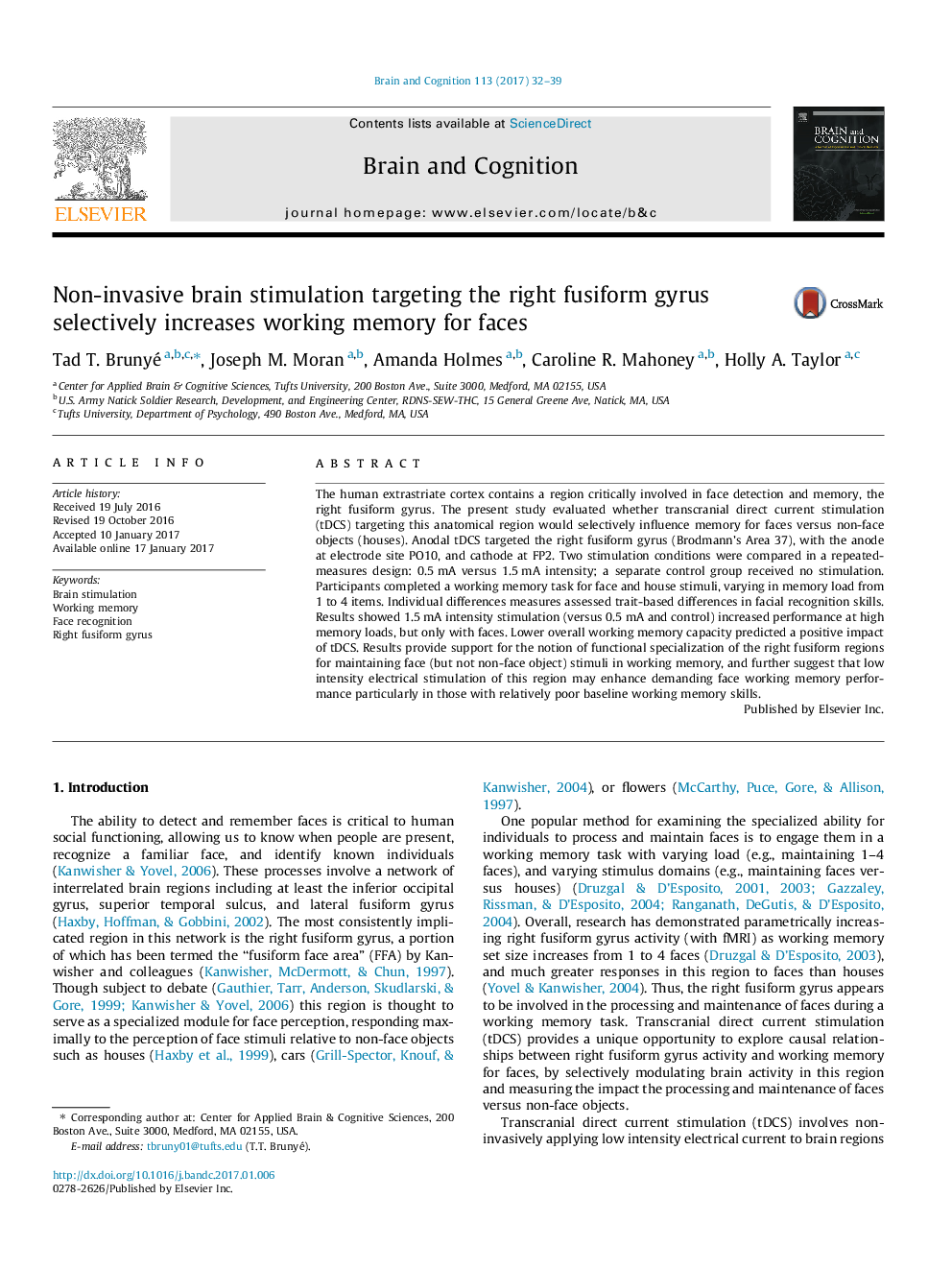| Article ID | Journal | Published Year | Pages | File Type |
|---|---|---|---|---|
| 5041141 | Brain and Cognition | 2017 | 8 Pages |
•Anodal tDCS was administered to right fusiform gyrus.•Participants performed a variable load working memory task with face/house stimuli.•Anodal tDCS enhanced face but not house memory performance.•Working memory capacity predicted influence of tDCS.
The human extrastriate cortex contains a region critically involved in face detection and memory, the right fusiform gyrus. The present study evaluated whether transcranial direct current stimulation (tDCS) targeting this anatomical region would selectively influence memory for faces versus non-face objects (houses). Anodal tDCS targeted the right fusiform gyrus (Brodmann’s Area 37), with the anode at electrode site PO10, and cathode at FP2. Two stimulation conditions were compared in a repeated-measures design: 0.5 mA versus 1.5 mA intensity; a separate control group received no stimulation. Participants completed a working memory task for face and house stimuli, varying in memory load from 1 to 4 items. Individual differences measures assessed trait-based differences in facial recognition skills. Results showed 1.5 mA intensity stimulation (versus 0.5 mA and control) increased performance at high memory loads, but only with faces. Lower overall working memory capacity predicted a positive impact of tDCS. Results provide support for the notion of functional specialization of the right fusiform regions for maintaining face (but not non-face object) stimuli in working memory, and further suggest that low intensity electrical stimulation of this region may enhance demanding face working memory performance particularly in those with relatively poor baseline working memory skills.
